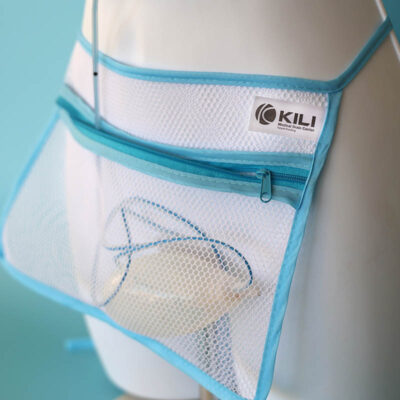Top surgery, a common procedure for transgender men, is just one step in the gender transition process. Much like a mastectomy, healing from top surgery requires a lot of patience and self-care. With some upfront planning and decision-making, you can simplify and even accelerate your recovery.
When Cyd Haug-West had his top surgery in 2015, his surgeon gave him the choice of having post-surgical drains. Known as Jackson-Pratt (JP) drains, this recovery tool helps the body heal faster and decreases the risk of infection. Wanting the best chance for an easy recovery, Cyd chose to have two drains inserted after surgery.
Cyd was lucky. Many surgical patients are surprised to wake up and find drains attached to their surgical wounds. After learning what to expect from his doctor, Cyd discussed the drains with his friend Cinde, who had endured breast cancer and four surgeries that required drains. As the founder of Kili Medical Drain Carriers, she shared her firsthand knowledge about managing post-surgical drains and gave Cyd two mesh carriers to use.
Top Surgery Tips
After receiving support and tips from both his online and local communities, Cyd wants to pay it forward by providing tips of his own:
Practice Healing
Before surgery, walk around your house to determine what you need to move down from higher shelves or cupboards. You need to place your frequently used items within arm’s reach while you are healing. Because of your incisions, you will not be able to raise or extend your arms fully.
Plan Ahead
Buy extra-long charging cords so you can reach your phone or tablet from your bed or couch. For example, if you read or binge-watch Netflix while you recover, you will need to keep your devices charged.
Remember Self-Care
Choose activities that promote healing. Get plenty of sleep and eat nutrient-rich foods. Fruits and vegetables can counteract constipation, a common side-effect of pain medication. Moving around also helps with constipation, so take walks, even if it’s just around the block.
Join the Conversation
Join transmasculine Facebook groups, which can provide a wealth of information and support. While local-area gender health or LGBTQI+ centers can also be a source of information, they can help you navigate issues such as the legalities of transition or the effects of hormones.
Follow the Doctor’s Orders
Because post-surgical care can vary, call your doctor with specific questions that arise throughout recovery. While Facebook groups and community health centers are great venues for support and general information, they are not the appropriate place for post-surgical instruction.
Simplify Your Recovery
Get a KILI Medical Drain Carrier. Drains are uncomfortable and cumbersome. They can pull on the drain site if you are not careful. From moving around the house and emptying drains to showering and sleeping, this game-changing device makes recovery so much easier.
Top surgery is hard enough. But, with some thought and careful planning, you can focus on healing and continue down the path of transitioning. To order a KILI Medical Drain Carrier, visit our order page.


